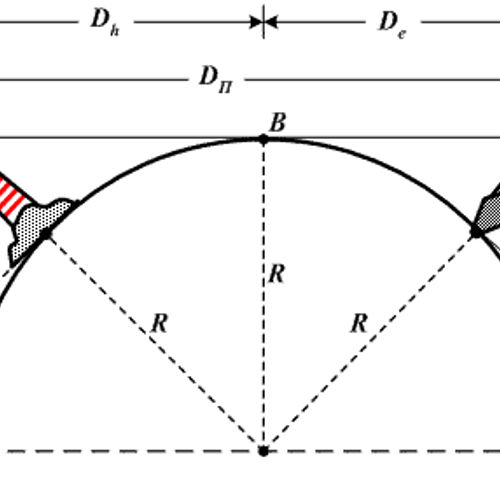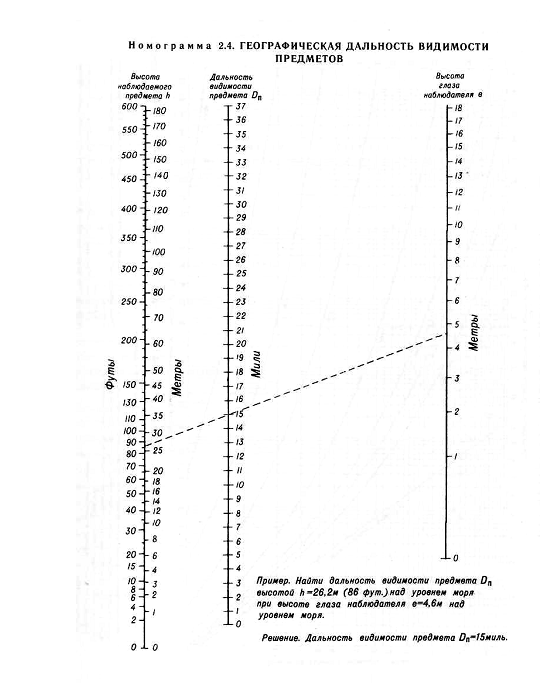
| Added | Fri, 13/09/2019 |
| Источники |
The range of visibility is the greatest distance at which it is possible to distinguish the subject from the surrounding background. Typically, the range is divided into geographical (defined by the spherical form of the earth) and optical (depending on the light source and reflected).
It is known that the light intensity decays with the square of the distance, and at a certain distance the light source becomes invisible to the eye. Defining the maximum distance of visibility of the light source for the normal vigilance of the eye, it is possible to obtain an optical visibility range of this source.
On the other hand, because of the spherical shape of the Earth are located on its surface observer may not always be visible light even from the most powerful source located at the distance of the optical range. For example, consider the observer at sea, who sees around him the circle of the horizon. It is called the visible horizon of the observer. The visibility of the object to the observer in this case is determined by the combined range of the visible horizon from the height of the observer's eye and the distance of the visible horizon from the height of the subject.
Sailors geographical range of visibility of objects is determined using nomograms Troickogo by concatenating the height of the observer's eyes (right scale) and height values of the object (left scale). At the intersection of this line with the middle scale to get the value of a geographic range of visibility in nautical miles.
Nomogram Troickogo
Nomogram Troickogo as its underlying simple formula does not take into account the resolution of the human eye and therefore gives reliable results only when calculating visibility (range open or close) point light sources (lights) in the dark. During the day the object becomes visible at a shorter distance when its angular altitude above the visible horizon exceeds the resolution capacity of the eye of the observer under these conditions. The sailors of the range of visibility is estimated by eye on a 9-point scale their optical appearance from 0 (visibility cable lengths of 0.25, which corresponds to very thick fog) to 9 points (visibility more than 30 miles, i.e., 55 km).
It is worth noting that the ability of a person to see something is determined not only by the range and characteristics of the object and the atmosphere. Important characteristics of the eye, which requires specific (and different in different people) the amount of light emitted or reflected to it by the object. The remote object that the person is able to see with the naked eye, is located outside of the milky Way is the Andromeda galaxy located at a distance of 2.5 million light years, or 37 quintillion km away from the Sun.
Limits of visual acuity depend on the distance between the individual cones and rods of the retina. On average, the object should lie at an angle not less than 1 arcminute, or one-sixth of a degree to excite the adjacent cones, regardless of close or far it is. Thus, no light emitting objects man-sized are distinguishable as long (no point) at a distance of only 3 kilometers.
There is also a meteorological range of visibility, which depends on the atmospheric transparency. Part of the light is absorbed by the particles contained in the air, which is a weakening of the forces of light. Usually meteorological visibility is the maximum distance from which in the daytime can be detected against the sky near the horizon (or on the background of aerial haze) absolutely black body of rather large angular dimensions (over 15 arc minutes). Is considered a standard meteorological range of visibility of 13.5 miles (21.7 km). The transparency coefficient of the atmosphere is always less than unity, so the geographic range of visibility is usually more real, with the exception of anomalous cases.
The transparency of the atmosphere depends on the precipitation (rain, fog, snow) and other factors (smoke, etc.). The ratio of horizontal visibility near the earth and slant visibility in low cloud, characterized by the following typical cases:
- The altitude of the lower boundary of the clouds not more than 100 m. the slant Range visibility in this case is 25 – 45% range of horizontal visibility near the earth.
- The height of the lower border of the cloud 100 and 200 m. the slant Range visibility at the exit of the cloud is 40 – 70 % of the horizontal visibility near the earth.
- The height of the lower border of the cloud more than 200 m. In this case, the slant visibility-cloud layer is close to horizontal visibility near the earth.
Distribution of horizontal visibility height depends on the height, shape and structure of the lower surface of the clouds, the existence and nature of atmospheric in-cloud cloud layer, weather-and visibility in them. The average thickness of layers with degraded visibility in each particular case, as the distribution of horizontal visibility height in-cloud layers depends on the relative humidity-cloud layer and the vertical gradient of temperature.
The visibility guidelines, in addition to geometric and meteorological factors, also affects the contrast of the object, and in the dark – and even the power of the light source, the color of fire, the design of the optical apparatus.
Thus, in assessing the range object, you need to understand that the accuracy of the result is affected by a large number of conditions, such as weather conditions, atmosphere transparency, vigilance of observer, height of the object, the characteristics of the emitted (or reflected) light them, etc. moreover, these factors can differently distort the visible shape of the object under different conditions of observation (to the naked eye, through glass, via optical devices, etc.), All of this can lead not only to incorrect determination of the distance, but also to the mistaken identification of the object itself.
Translated by «Yandex.Translator»
Log in or register to post comments


